 After a number of headlines on today's BradCast --- a lot of stuff happened since we last spoke last week --- we're on to our main story today. And it's a doozy.
After a number of headlines on today's BradCast --- a lot of stuff happened since we last spoke last week --- we're on to our main story today. And it's a doozy.
Last month, during off-year elections in several states, touchscreen voting systems in Northampton County, Pennsylvania made by ES&S, the nation's largest voting system vendor, were discovered to be printing out the opposite of what voters had selected on their screens in two different statewide contests.
The so-called touchscreen Ballot Marking Devices (BMDs) used in Northampton, a suburban swing-county just outside of Philly in the critical battleground state, are supposed to print a ballot summary card, in human-readable language, based on selection made on the touchscreens, allowing voters to confirm their choices before those cards are then tabulated by an optical-scan computer. Similar systems are (shamefully) still used by about a fifth of the nation's voters on Election Day across the county, including in every precinct in the critical battleground state of Georgia and here in the nation's most populace County in Los Angeles.
But last month, on November 7th, there were two statewide retention elections for Judges, one Democratic and one Republican. If voters selected either YES or NO for both judges, everything printed out on the ballot cards as expected. But if they selected YES in one race and NO for the other, the system would flip their votes on the summary print-out. But here's the catch. It only flipped the votes on the human-readable portion of the ballot. The barcodes also printed on the ballot summary --- which humans cannot read --- as used for tabulation, recorded the votes correctly as cast.
As you can imagine, all of this resulted in chaos on Election Day. Some voters --- once precincts even noticed the problem --- began voting on hand-marked Emergency Paper Ballots instead. In PA, however, there are only about 20 such emergency ballots available at each precinct. They ran out very quickly.
After explanations by election officials and employees at ES&S (which did the programming of the computers for the election) on Election Day, a County judge ordered voters to begin using the touchscreen systems again. Some officials tried to ease voters worries by telling them they would just FLIP the votes after polls closed! In other precincts, voters were reportedly instructed to simply vote the opposite of what they actually wanted in those two contests.
This is the same County where, back in 2019, the first time these ES&S ExpressVoteXL systems were first deployed, the systems recorded zero votes for some races in certain precincts. One of those races, believe it or not, was for the County Judge who, this year, gave the okay to start using the misprogrammed systems again. He didn't receive zero votes in those precincts in 2019. In fact, he won the race for County Judge, as a post-election investigation would reveal.
So, what actually happened on November 7th last month? Longtime election technologist KEVIN SKOGLUND of Pennsylvania's nonpartisan Citizens for Better Elections, investigated to find out. He recently published a detailed report breaking down exactly what wrong. He was able to confirm that while the printed, human-readable text appeared to flip the votes in those two races, the human-unreadable barcode version of the ballot correctly reflected the intent of voters. In short, the votes were right, but the labels next to the two contests in question had been reversed.
As he explains on today's program, this is a programming error that, frankly, should never have been able to happen. Election Officials have long told skeptics of unverifiable touchscreen BMD systems that there was nothing to worry about, because the systems printed out a paper record of voters votes that they could approve before casting, and that the computer-printed barcodes or QRCodes would always match that human-readable text. In Northampton County last month, clearly they did not.
Skoglund also discusses the terrifying danger posed by a programming error like this --- whether it actually happens or voters simply claim that it did --- to next year's Presidential election in states like Pennsylvania, Georgia and elsewhere where voters at the polls are forced to use the same or similar touchscreen systems to cast their ballots.
Describing BMDs like those used in Northampton as "a $9,000 pencil," Skoglund warns today that "events like this shake people's trust, with good reason."
"One of the core cybersecurity concerns is resilience," he tells me. "You want to have systems that can recover from problems. One of the reasons that we like hand-marked paper ballots is not just that the voter marks their ballot and verifies it all at the same time --- so there's not this extra step of checking if the machines works --- one of the other properties of them is their resilience. Because even if the power goes out, even if the machines all stop working, as long as you have a pen, you can mark the ovals on your ballot. But with these [BMD] machines, your 'pen' may just stop working. And you have to have a backup plan if that happens."
Clearly in Northampton, PA last month, there was no real backup plan. If something like this happens next year --- either real or manufactured by nefarious voters --- in even one precinct in PA or any of the other swing-states where similar systems are insanely still used by millions of voters, I shudder to think of what may happen next in this nation.
Incredibly enough, even after the failures in 2019 and 2023, Northampton plans to use the same systems again next year. We discuss that and much more related to all of this on today's show, before we receive phone calls near the end of the program from a few other election experts --- Susan Greenhalgh of FreeSpeechForPeople.org and Dr. Philip Stark, UC-Berkeley election expert and inventor of the post-election Risk Limiting Audit (RLA) protocol. Both have long warned of exactly this kind of election nightmare and have long urged all election officials to move to reliable, verifiable, hand-marked paper ballots for all voters, other than for disabled voters who may choose to vote with an assistive technology.
(Snail mail support to "Brad Friedman, 7095 Hollywood Blvd., #594 Los Angeles, CA 90028" always welcome too!)
|


 Sunday 'Now Hoarding' Toons
Sunday 'Now Hoarding' Toons Mad World:
Mad World: 'Green News Report' 5/15/25
'Green News Report' 5/15/25
 Plane Corruption and the Future of the DOJ: 'BradCast' 5/14/25
Plane Corruption and the Future of the DOJ: 'BradCast' 5/14/25 'Deeply Evil': GOP Proposes Largest Medicaid Cuts in History: 'BradCast' 5/13/25
'Deeply Evil': GOP Proposes Largest Medicaid Cuts in History: 'BradCast' 5/13/25 'Green News Report' 5/13/25
'Green News Report' 5/13/25 And Then They Came for the Mayors...: 'BradCast' 5/12/25
And Then They Came for the Mayors...: 'BradCast' 5/12/25 Sunday 'New Guy, Old Guy' Toons
Sunday 'New Guy, Old Guy' Toons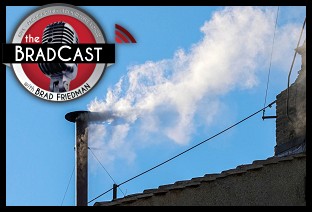 Blowing Smoke. At the Vatican and White House: 'BradCast' 5/8/25
Blowing Smoke. At the Vatican and White House: 'BradCast' 5/8/25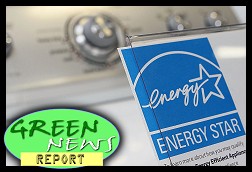 'Green News Report' 5/8/25
'Green News Report' 5/8/25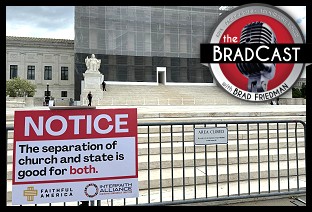 SCOTUS Weighs Public Funding of Religious Schools: 'BradCast' 5/7/25
SCOTUS Weighs Public Funding of Religious Schools: 'BradCast' 5/7/25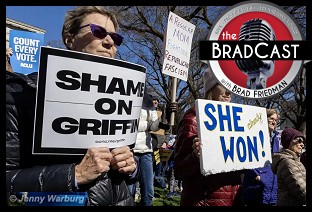 Trump Judge Blocks NC GOP Theft of 2024 Supreme Court Seat: 'BradCast' 5/6/25
Trump Judge Blocks NC GOP Theft of 2024 Supreme Court Seat: 'BradCast' 5/6/25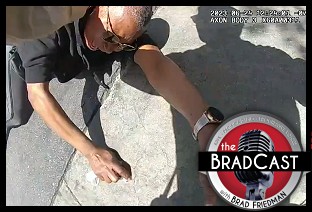 Prosecutors Quit After U.S Attny Strikes Deal With Felon Cop: 'BradCast' 5/5/25
Prosecutors Quit After U.S Attny Strikes Deal With Felon Cop: 'BradCast' 5/5/25 Trump Losing Streak Continues into SECOND Hundred Days: 'BradCast' 5/1/25
Trump Losing Streak Continues into SECOND Hundred Days: 'BradCast' 5/1/25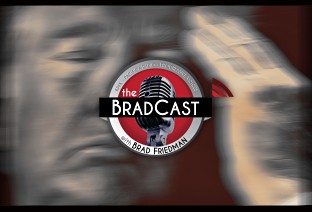 100 Daze (w/ Digby and Driftglass): 'BradCast' 4/30/25
100 Daze (w/ Digby and Driftglass): 'BradCast' 4/30/25 Campaign to 'Impeach Trump Again' Gains Fresh Momentum: 'BradCast' 4/29/25
Campaign to 'Impeach Trump Again' Gains Fresh Momentum: 'BradCast' 4/29/25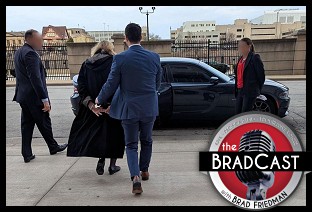 And Then They Came for the Judges...: 'BradCast' 4/28/25
And Then They Came for the Judges...: 'BradCast' 4/28/25 Trump EPA Guts Enviro Justice Office: 'BradCast' 4/24/25
Trump EPA Guts Enviro Justice Office: 'BradCast' 4/24/25
 VA GOP VOTER REG FRAUDSTER OFF HOOK
VA GOP VOTER REG FRAUDSTER OFF HOOK Criminal GOP Voter Registration Fraud Probe Expanding in VA
Criminal GOP Voter Registration Fraud Probe Expanding in VA DOJ PROBE SOUGHT AFTER VA ARREST
DOJ PROBE SOUGHT AFTER VA ARREST Arrest in VA: GOP Voter Reg Scandal Widens
Arrest in VA: GOP Voter Reg Scandal Widens ALL TOGETHER: ROVE, SPROUL, KOCHS, RNC
ALL TOGETHER: ROVE, SPROUL, KOCHS, RNC LATimes: RNC's 'Fired' Sproul Working for Repubs in 'as Many as 30 States'
LATimes: RNC's 'Fired' Sproul Working for Repubs in 'as Many as 30 States' 'Fired' Sproul Group 'Cloned', Still Working for Republicans in At Least 10 States
'Fired' Sproul Group 'Cloned', Still Working for Republicans in At Least 10 States FINALLY: FOX ON GOP REG FRAUD SCANDAL
FINALLY: FOX ON GOP REG FRAUD SCANDAL COLORADO FOLLOWS FLORIDA WITH GOP CRIMINAL INVESTIGATION
COLORADO FOLLOWS FLORIDA WITH GOP CRIMINAL INVESTIGATION CRIMINAL PROBE LAUNCHED INTO GOP VOTER REGISTRATION FRAUD SCANDAL IN FL
CRIMINAL PROBE LAUNCHED INTO GOP VOTER REGISTRATION FRAUD SCANDAL IN FL Brad Breaks PA Photo ID & GOP Registration Fraud Scandal News on Hartmann TV
Brad Breaks PA Photo ID & GOP Registration Fraud Scandal News on Hartmann TV  CAUGHT ON TAPE: COORDINATED NATIONWIDE GOP VOTER REG SCAM
CAUGHT ON TAPE: COORDINATED NATIONWIDE GOP VOTER REG SCAM CRIMINAL ELECTION FRAUD COMPLAINT FILED AGAINST GOP 'FRAUD' FIRM
CRIMINAL ELECTION FRAUD COMPLAINT FILED AGAINST GOP 'FRAUD' FIRM RICK SCOTT GETS ROLLED IN GOP REGISTRATION FRAUD SCANDAL
RICK SCOTT GETS ROLLED IN GOP REGISTRATION FRAUD SCANDAL VIDEO: Brad Breaks GOP Reg Fraud Scandal on Hartmann TV
VIDEO: Brad Breaks GOP Reg Fraud Scandal on Hartmann TV RNC FIRES NATIONAL VOTER REGISTRATION FIRM FOR FRAUD
RNC FIRES NATIONAL VOTER REGISTRATION FIRM FOR FRAUD EXCLUSIVE: Intvw w/ FL Official Who First Discovered GOP Reg Fraud
EXCLUSIVE: Intvw w/ FL Official Who First Discovered GOP Reg Fraud GOP REGISTRATION FRAUD FOUND IN FL
GOP REGISTRATION FRAUD FOUND IN FL

































